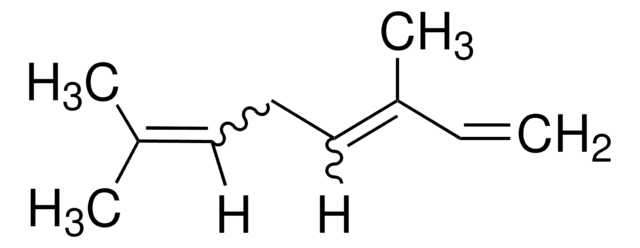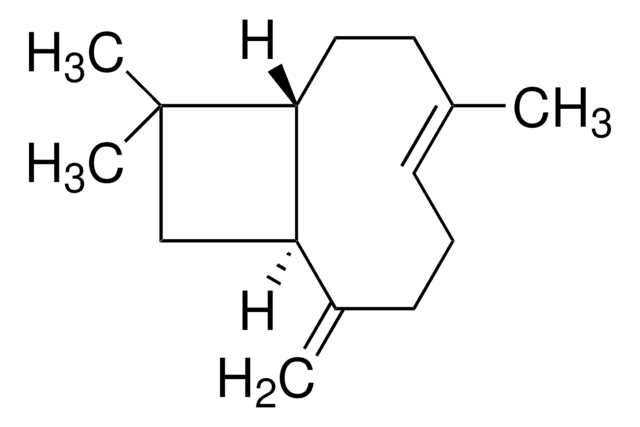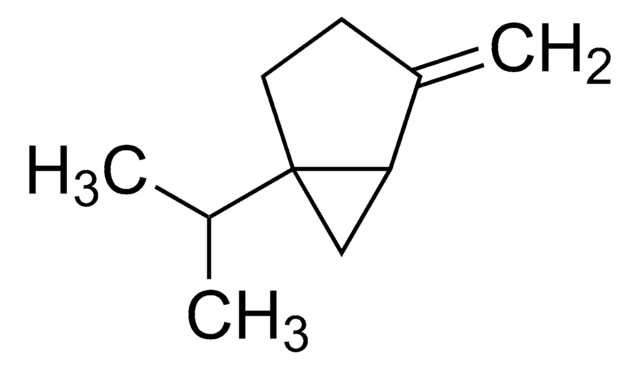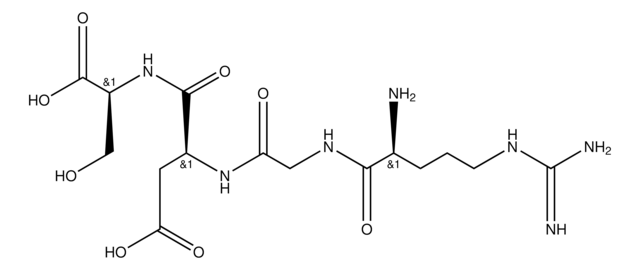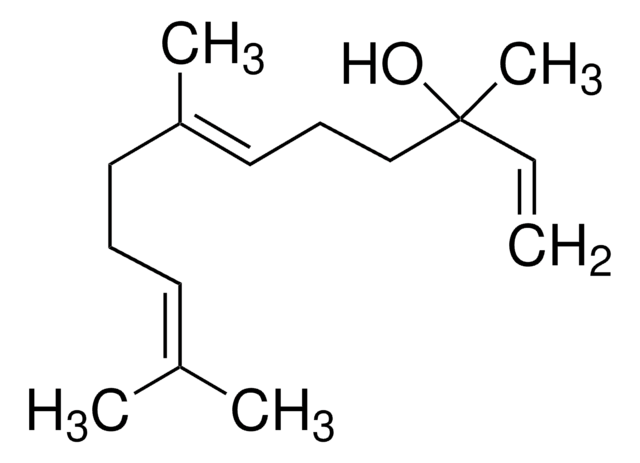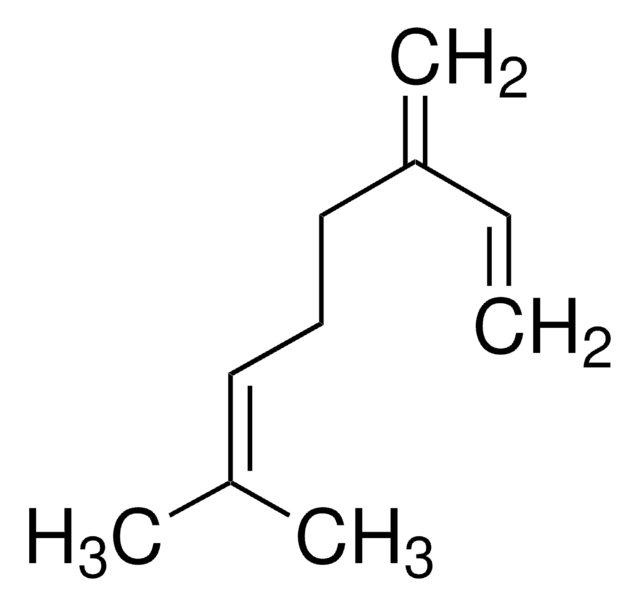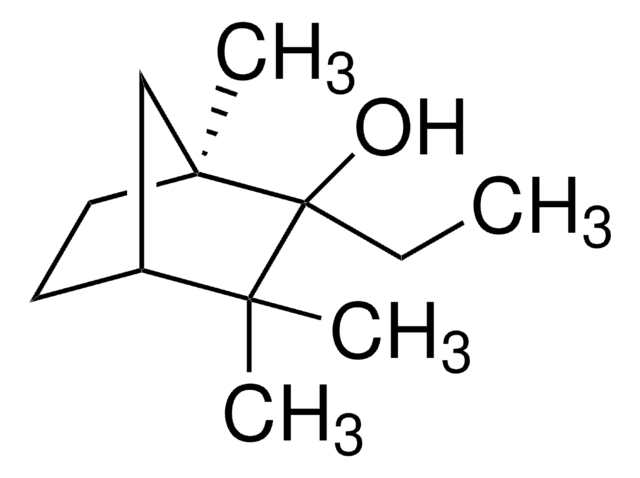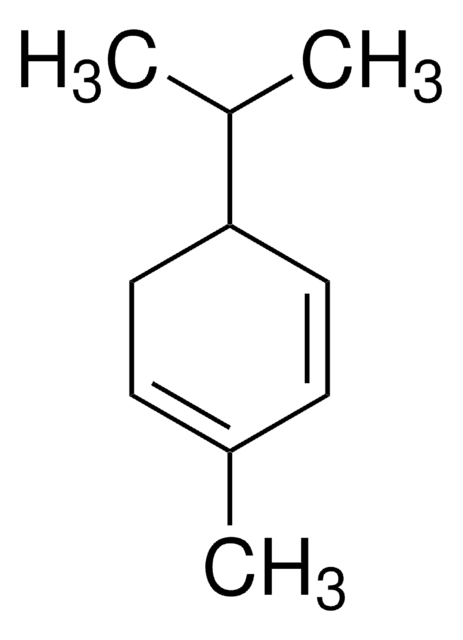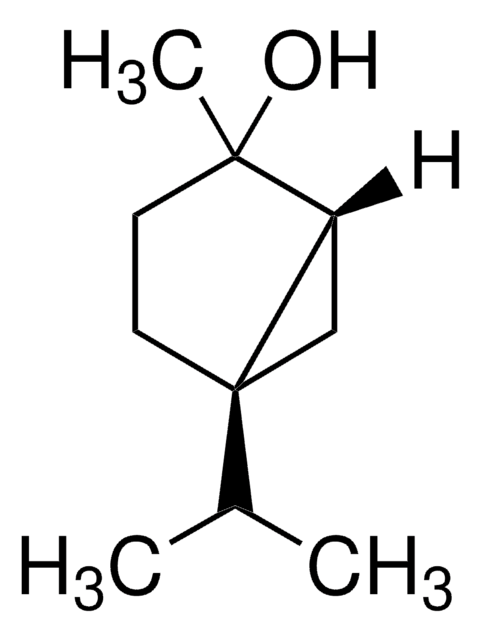W353901
Ocimene
mixture of isomers, stabilized, ≥90%
Sinônimo(s):
3,7-Dimethyl-1,3,6-octatrien, 3,7-Dimethyl-1,3,6-octatriene
About This Item
Produtos recomendados
fonte biológica
synthetic
Nível de qualidade
Agency
meets purity specifications of JECFA
conformidade reg.
FDA 21 CFR 172.515
Ensaio
≥90%
contém
BHT as stabilizer
índice de refração
n20/D 1.485
p.e.
65-66 °C/13 mmHg
densidade
0.818 g/mL at 20 °C (lit.)
aplicação(ões)
flavors and fragrances
Documentação
see Safety & Documentation for available documents
Organoléptico
green; woody; tropical
cadeia de caracteres SMILES
[H]C(CC([H])=C(C)C=C)=C(C)C
InChI
1S/C10H16/c1-5-10(4)8-6-7-9(2)3/h5,7-8H,1,6H2,2-4H3
chave InChI
IHPKGUQCSIINRJ-UHFFFAOYSA-N
Procurando produtos similares? Visita Guia de comparação de produtos
Descrição geral
Aplicação
- Volatile metabolomics and chemometric study provide insight into the formation of the characteristic cultivar aroma of Hemerocallis.: This study uses volatile metabolomics and chemometrics to explore the aroma formation in Hemerocallis, identifying significant volatile compounds including ocimene. The findings provide a deeper understanding of the biochemical pathways influencing aroma in plant cultivars (Zhou et al., 2023).
- A taste of sweet pepper: Volatile and non-volatile chemical composition of fresh sweet pepper (Capsicum annuum) in relation to sensory evaluation of taste.: Investigating the chemical composition of sweet peppers, this study identifies ocimene among the key volatiles contributing to flavor profiles, correlating chemical data with sensory evaluations to enhance understanding of taste perception in horticultural products (Eggink et al., 2012).
Exoneração de responsabilidade
Palavra indicadora
Danger
Frases de perigo
Declarações de precaução
Classificações de perigo
Aquatic Acute 1 - Aquatic Chronic 2 - Asp. Tox. 1 - Flam. Liq. 3 - Self-heat. 2 - Skin Irrit. 2
Código de classe de armazenamento
4.2 - Pyrophoric and self-heating hazardous materials
Classe de risco de água (WGK)
WGK 3
Ponto de fulgor (°F)
132.8 °F - closed cup
Ponto de fulgor (°C)
56 °C - closed cup
Equipamento de proteção individual
Eyeshields, Faceshields, Gloves, type ABEK (EN14387) respirator filter
Escolha uma das versões mais recentes:
Já possui este produto?
Encontre a documentação dos produtos que você adquiriu recentemente na biblioteca de documentos.
Os clientes também visualizaram
Nossa equipe de cientistas tem experiência em todas as áreas de pesquisa, incluindo Life Sciences, ciência de materiais, síntese química, cromatografia, química analítica e muitas outras.
Entre em contato com a assistência técnica